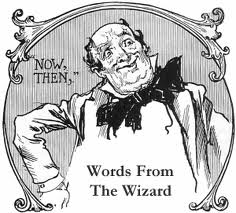 The turkey was no sooner packed away in its Tupperware containers and Americans were running out their front doors to cash-in on Black Friday sales and promotions. In fact, according to early projections, this Black Friday was a record-setting day with more cash finding its way into cash registers and more feet stampeding through the malls than ever before “on the same day”.
The turkey was no sooner packed away in its Tupperware containers and Americans were running out their front doors to cash-in on Black Friday sales and promotions. In fact, according to early projections, this Black Friday was a record-setting day with more cash finding its way into cash registers and more feet stampeding through the malls than ever before “on the same day”.
When I read this, the phrase that jumped out at me was: “over the same day last year”. It caught my attention because it was used in every article I read about this year’s Black Friday phenomenon. There was something that bothered me greatly about this phrase, and it wasn’t until my long drive home on Saturday and Sunday from my Thanksgiving travels that it finally dawned on me.
This phrase is powerful because it represents an industry’s commitment to measurement and benchmarking, and it isn’t a phrase that you hear many non-profit organizations using. Sure . . . you hear non-profit folks say things like “the campaign will exceed last year’s amount raised” or “event revenue is down compared to last year”. However, you almost never hear non-profit folks say things like:
Our agency’s philanthropic contributions are 6.1-percent higher than they were for the same period last year, which is perfectly in line with industry trends for non-profit’s our size.
While I am not sure why we don’t hear this more from our charity’s of choice, I am certain it isn’t because of a lack of information. I can confidently say this because at the bottom of my new website’s homepage I link to Blackbaud’s “Index of Charitable Giving”. This is one of the best things Blackbaud has ever done for the non-profit sector. The service is a broad-based fundraising index that reports total giving trends of 1,319 nonprofit organizations representing $2.3 billion in yearly giving on a monthly basis.
 Here are just a few ideas that you might consider using this number to make your agency stronger:
Here are just a few ideas that you might consider using this number to make your agency stronger:
- Measure your fundraising performance against similar sized agencies. Share this comparative information with your resource development committee and use it to spark engaging conversations around “WHY”. You may be surprised where you end up.
- Measure your fundraising performance against the same time period last year. Use this baseline data during your agency’s annual resource development planning efforts. It might spark engaging conversations and help make good adjustments to next year’s fundraising plan.
- Use the benchmarking and baseline data during year-end reviews with agency staff who have resource development responsibilities (including non-profit CEOs). I guarantee board volunteers asking why the agency failed to keep pace with or greatly exceeded the industry’s pace during a year-end evaluation will spark engaging conversations.
- Publish in your agency’s newsletters, website and impact reports how well your fundraising efforts did compared to other similar sized organizations compared to the same time last year. I guarantee that being transparent with this information will spark engaging conversations.
I can almost hear some folks saying that it doesn’t make sense to compare their agency with a national index because their community is so “unique” (kind of like a unicorn). To those of you whose minds are already there, I have two things to say:
- Poppycock!
- If you must have it your way, there is nothing stopping you from pulling a few non-profits in your “unique community” together and sharing data every quarter in the spirit of benchmarking and measurement.
It has been said by many different people over the centuries: “What gets measured, gets done!”
So, let me end by asking you: What are you measuring at your non-profit organization? Please use the comment box below to share what you’re measuring and how you are using that information. We can all learn from each other.
Here’s to your health!
Erik Anderson
Founder & President, The Healthy Non-Profit LLC
www.thehealthynonprofit.com
erik@thehealthynonprofit.com
http://twitter.com/#!/eanderson847
http://www.facebook.com/eanderson847
http://www.linkedin.com/in/erikanderson847













